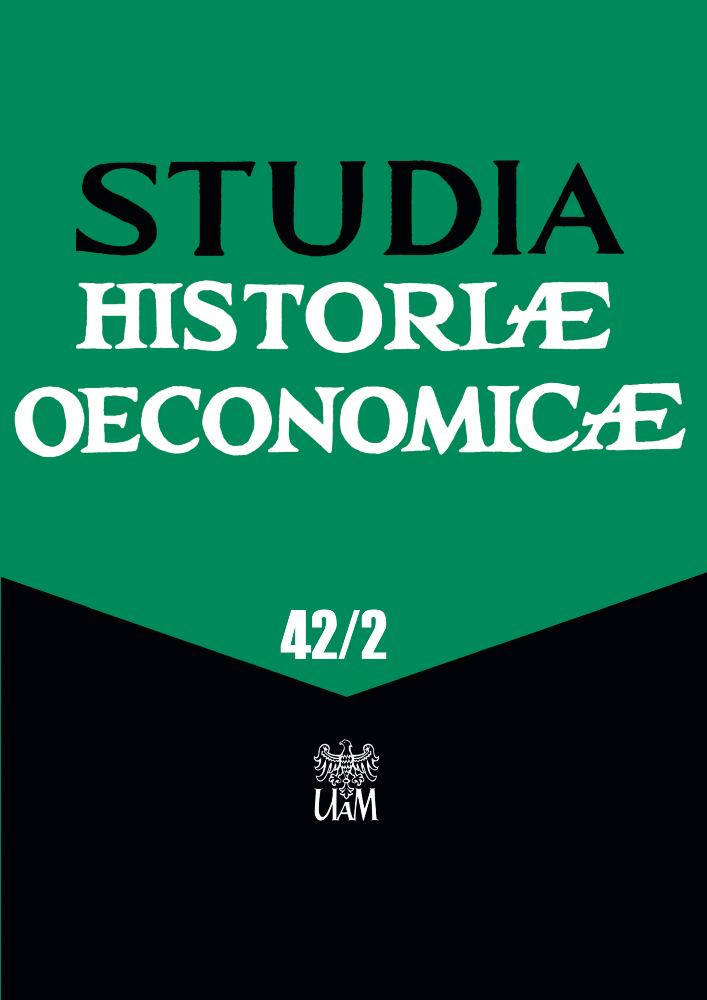Abstract
The US labor movement gained momentum after the passage of the NIRA (1933) and especially the Wagner Act (1935). The new law guaranteed employees the right to organise and bargain collectively through representatives of their own choosing. The dynamic growth in union membership was accompanied by a heated debate over whether unions should be organised to cover all workers in an industry or on an occupational or craft basis. This piece covers Committee of Industrial Organizations (CIO) pamphlets published between 1935 and 1936, a critical period in the rivalry between the American Federation of Labor (AFL) and the CIO. Most took the form of journalistic commentary on current events in the union environment. The pamphlet, as a form of communication, by definition, presents a one-sided description of reality. Nevertheless, the CIO pamphlets are a valuable source of knowledge about the division in the American labor movement in the 1930s. In this piece, I examine the axes of contention and arguments. They cover various issues, such as an assessment of the US trade union movement’s achievements, jurisdictional claims, industrial charters, and dues. I trace the evolution of radicalism in the views of the CIO leadership, from reforming the Committee in the spirit of “unionising unorganised mass production under the banner of the AFL” to massive criticism of the Federation that ultimately made further coexistence impossible. The latter resulted in the AFL suspending the CIO in September 1936.
Funding
This work was supported by the National Science Centre, Poland grant no. 2022/06/X/HS3/00420
References
GMMA, Box 1, F1 – George Meany Memorial Archive for Democracy, Social Justice, Organized Labor and the Working Class, CIO Bound Pamphlets, 1935–1951, 0053-LBR-RG34-002. Box 1, folder 1: How the Rubber Workers Won.
GMMA, Box 25, F1 – George Meany Memorial Archive for Democracy, Social Justice, Organized Labor and the Working Class, CIO Bound Pamphlets, 1935–1951, 0053-LBR-RG34-002. Box 25, folder 1: Industrial Unionism: The Vital Problem of Organized Labor.
GMMA, Box 35, F2 – George Meany Memorial Archive for Democracy, Social Justice, Organized Labor and the Working Class, CIO Bound Pamphlets, 1935–1951, 0053-LBR-RG34-002. Box 35, folder 2: The Future of Organized Labor.
GMMA, Box 35, F3 – George Meany Memorial Archive for Democracy, Social Justice, Organized Labor and the Working Class, CIO Bound Pamphlets, 1935–1951, 0053-LBR-RG34-002. Box 35, folder 3: Industrial Unions Mean Unity: Our Answer to President Green.
GMMA, Box 35, F4 – George Meany Memorial Archive for Democracy, Social Justice, Organized Labor and the Working Class, CIO Bound Pamphlets, 1935–1951, 0053-LBR-RG34-002. Box 35, folder 4: The Case for Industrial Organization.
GMMA, Box 35, F6 – George Meany Memorial Archive for Democracy, Social Justice, Organized Labor and the Working Class, CIO Bound Pamphlets, 1935–1951, 0053-LBR-RG34-002. Box 35, folder 6: Industrial Democracy in Steel.
GMMA, Box 35, F7 – George Meany Memorial Archive for Democracy, Social Justice, Organized Labor and the Working Class, CIO Bound Pamphlets, 1935–1951, 0053-LBR-RG34-002. Box, 35, folder 7: Why the Committee for Industrial Organization Will Carry On: Letter to the Executive Council of the AFL on July 21.
Barkin, S. (1936) ‘Collective Bargaining and Section 7 (b) of NIRA’, The Annals of the American Academy of Political and Social Science, 184, pp. 169–175. DOI: https://doi.org/10.1177/000271623618400124
Bernstein, I. (2010) The Lean Years: A History of the American Worker 1920–1933. Chicago: Haymarket Books.
Cochran, B. (1977) Labor and Communism: The Conflict That Shaped American Unions. Princeton: Princeton University Press.
Congressional Record: Proceedings and Debates of the First Session of the Seventy-Third Congress (1933) Vol. 80, Part 10, June 19 to June 20, 1936. Washington: Government Printing Office.
Congressional Record: Proceedings and Debates of the Second Session of the Seventy-Fourth Congress (1936) Vol. 80, Part 10, June 19 to June 20, 1936. Washington: Government Printing Office.
Galenson, W. (1960) The CIO Challenge to the AFL: A History of the American Labor Movement, 1935–1941. Cambridge–London: Harvard University Press.
Green, J.R. (1998) The World of the Worker. Labor in Twentieth-Century America. Urbana–Chicago: University of Illinois Press.
Harper, M.C., Estreicher, S., Griffith, K. (2015) Labor Law. Cases, Materials, and Problems, New York: Wolter Kluwer.
Millis, H. and Brown, E.C., (1950) From the Wagner Act to Taft–Hartley; a Study of National Labor policy and Labor relations. Chicago: The University of Chicago Press.
Perlman, S. (1928) A Theory of the Labor Movement. New York: Kelley.
Report of Proceedings of the Fifty-Fifth Annual Convention of the American Federation of Labor (1935) Washington D.C.: Judd & Detweiler.
Trachtenberg, A. (ed.) (1918) The American Labor Year Book, 1917–18. New York: Rand School of Social Science.
Tomlins, C.L. (1979/1992) ‘AFL Unions in the 1930s: Their Performance in Historical Perspective’, in Dubofsky, M. (ed.) The New Deal: Conflicting Interpretations and Shifting Perspectives. New York–London: Garland Publishing, pp. 147-172 DOI: https://doi.org/10.2307/1894558
Tully, J.A. (2011) The Devil’s Milk: a Social History of Rubber. New York: Monthly Review Press.
‘Types of Employer–Employee Dealing’ (1935) Monthly Labor Review, 41(6), pp. 1441–1466.
Zieger, R.H. (1995) The CIO. 1935–1935. Chapel Hill–London: The University of North Carolina Press.
Zieger, R.H. and Gall G.J. (2002) American Workers, American unions: The Twentieth Century. Baltimore–London: Johns Hopkins University Press. DOI: https://doi.org/10.56021/9780801870781
License
Copyright (c) 2024 Kamil Kowalski

This work is licensed under a Creative Commons Attribution-ShareAlike 4.0 International License.





